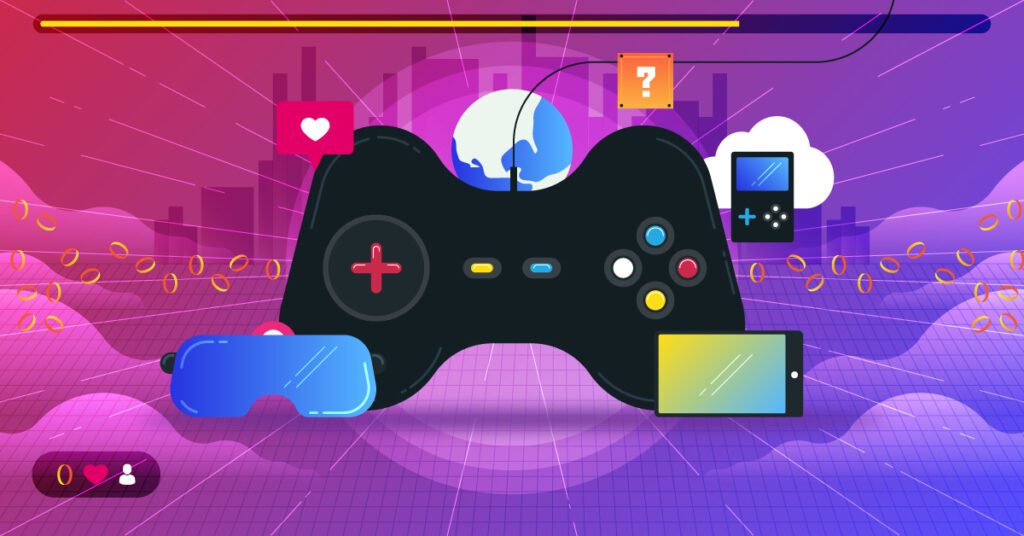The gaming industry is continuously evolving with new trends emerging each year. Game designers are pushing the boundaries of what is possible and creating immersive worlds for players to explore, using techniques such as immersive storytelling, artistic innovation, virtual reality, and user-generated content. The move towards immersive storytelling involves the creation of elaborate narratives using cinematic cutscenes, dialogue, and contextual storytelling. Artistic innovation involves pushing the boundaries of what is possible with unique art styles, character designs, and game mechanics such as Cuphead. Virtual reality enhances gameplay by placing players in a fully-realized 3D world, while user-generated content enables players to express their creativity and share it with others.
The Future of Game Design: Emerging Artistic Trends in the Gaming Industry
The gaming industry has grown leaps and bounds over the years, and it’s showing no signs of slowing down. From casual games to virtual reality experiences, game designers are continually pushing the boundaries of what’s possible, creating immersive and engaging worlds for players to explore. With the constant advancements in technology and the increasing sophistication of game engines, it’s no wonder that the world of game design is evolving in new and exciting ways. Here are some of the emerging artistic trends that are shaping the future of game design.
Immersive Storytelling
One of the most significant trends in modern game design is the move towards immersive storytelling. Game designers are investing more time and resources into crafting elaborate narratives that pull players into the world of the game. This is achieved through a variety of techniques, including cinematic cutscenes, dialogue, and contextual storytelling (where the environment and objects in the game world tell a story).
The Last of Us Part II, released in 2020, is an excellent example of how immersive storytelling can enhance the gaming experience. The game features a rich, complex narrative that explores themes of grief, revenge, and the human condition. The story is not only emotional and engaging, but it also serves to enhance the gameplay, making for a more satisfying experience overall.
Artistic Innovation
Another trend in game design is the use of artistic innovation. Game developers are no longer content to create simple, linear games with static environments. Instead, they’re pushing the boundaries of what’s possible with new and innovative art styles, character designs, and game mechanics.
Cuphead, released in 2017, is an excellent example of artistic innovation in action. The game features a hand-drawn art style that harkens back to the golden age of animation. The characters are whimsical and imaginative, and the gameplay is challenging and engaging. Cuphead was a commercial and critical success, demonstrating that players are hungry for more unique and artistic games.
Virtual Reality
Virtual reality (VR) is an exciting new development in game design, offering players an unparalleled level of immersion and interaction. VR games allow players to enter a fully-realized 3D world, where they can interact with objects and characters in a wholly new way.
Astro Bot Rescue Mission, released in 2018, is an example of how VR can enhance the gameplay experience. The game places players in the role of a tiny robot, who must navigate through levels filled with obstacles and enemies. The VR technology allows players to look around the game world, peeking around corners, and interacting with objects in a more natural way. The result is a gaming experience that feels more like a physical activity than a traditional video game.
User-generated Content
Finally, user-generated content is becoming an increasingly important trend in game design. With the rise of online communities and social media, gamers are eager to create and share their own content with others. Games that offer robust level editors or character creation tools allow players to express their creativity and share their creations with a global audience.
Super Mario Maker 2, released in 2019, is an example of user-generated content done right. The game offers players a suite of tools that allow them to create their own Mario levels, complete with unique enemies, obstacles, and power-ups. Players can share their levels online, allowing others to play and rate them. The result is a massive library of user-generated content that keeps players engaged and interested long after the initial release of the game.
Conclusion
The future of game design is bright, with new and exciting trends emerging every year. As technology continues to advance, game designers will be able to push the boundaries of what’s possible, creating immersive and engaging gaming experiences that will captivate players for years to come.
